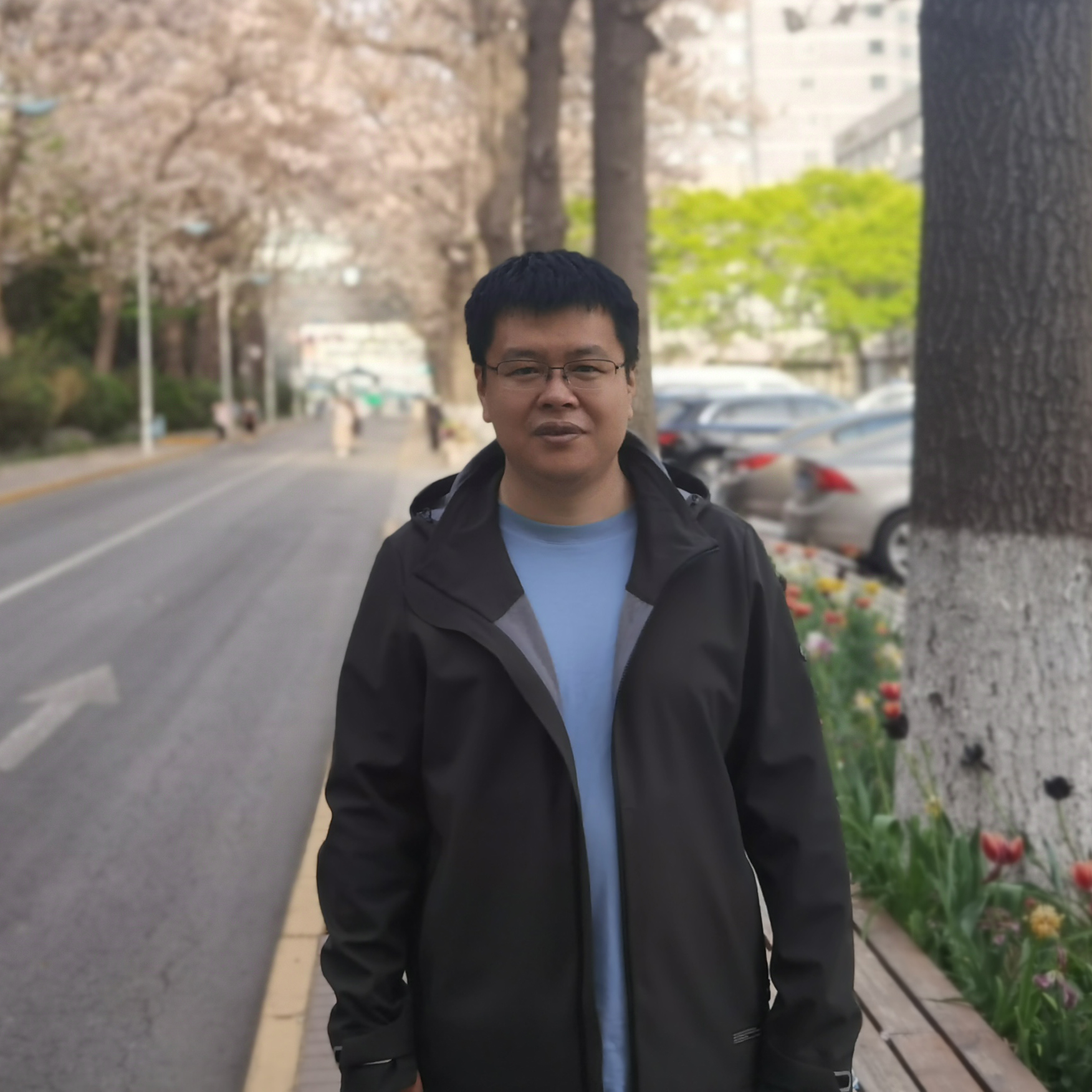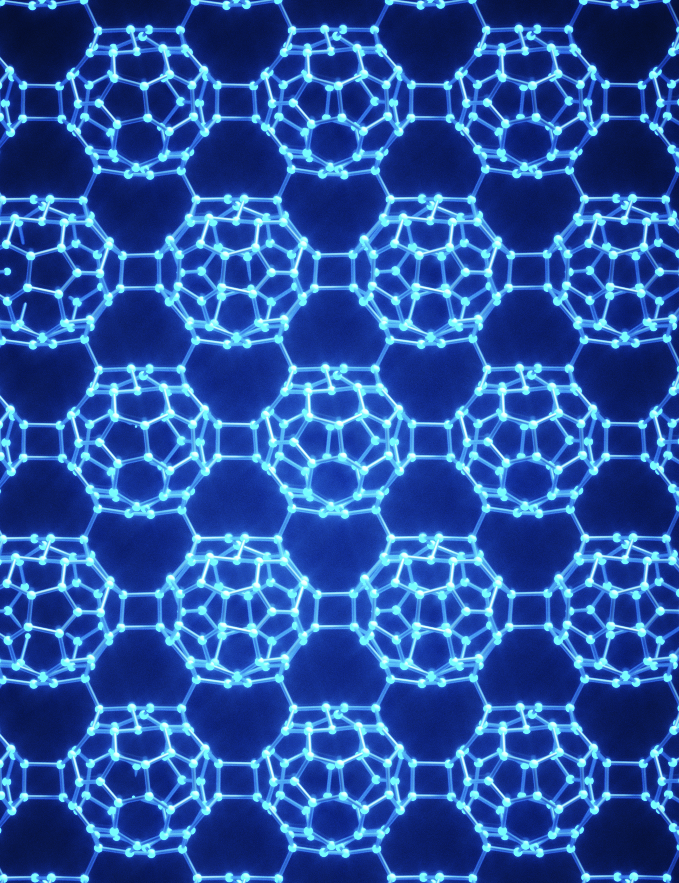 Contact us
Contact us
Institute of Chemistry Chinese Academy of Sciences
CAS Key Laboratory of Organic Solids
Adress:Room 1126, Building 6, No. 2 North 1st Street, Zhongguancun, Haidian District, Beijing
Postcode:100190 TEL:010-82619551
E-mail:zhengjian@iccas.ac.cn
 Introduction
Introduction
 News
News
Chinese scientists have synthesized a new single crystal carbon material
Figure 1 Schematic of crystal structure of monolayer qHP C60
With the support of the National Natural Science Foundation (22175184, 22105207), Zheng Jian’s group from the Institute of Chemistry Chinese Academy of Sciences, has created a new type of carbon allotrope, that is, a monolayer single crystal of quasi hexagonal polymerized C60 (qHP C60) under atmospheric pressure (Figure 1). This work, entitled “Synthesis of a monolayer fullerene network”, was published in Nature on June 15, 2022 (https://www.nature.com/articles/s41586-022-04771-5). News & Views of Nature commented the work that “Hou et al. show that these two approaches can be combined to make a new form of carbon that consists of soccer-ball-shaped C60 molecules, …Such experimental breakthroughs are expected to revive interest in 2D carbon materials and could eventually lead to device applications… is a promising general approach for the production of new carbon nanomaterials, and one that could be scaled up more easily than alternative methods, such as the synthesis of 2D materials on surfaces”. (https://www.nature.com/articles/d41586-022-01568-4).
Carbon is one of the most diverse elements in the periodic table. It can form chemical bonds in a variety of hybrid ways to obtain a unique π electron conjugation system, thus showing excellent mechanical, thermal, optical and electrical properties. These properties of carbon materials are closely related to their topological structures. Therefore, it is of great significance to study new carbon allotropes, especially those with band gaps. The preparation of a brand new carbon material has always been a frontier research in the field of materials science. Each discovery of new carbon materials, such as fullerenes, carbon nanotubes, graphene and graphyne, has always triggered a research upsurge. However, due to the lack of effective and reliable synthesis methods, the preparation of new carbon materials remains a great challenge.
Figure 2 Synthetic route of monolayer qHP C60
Zheng Jian’s group has developed a synthesis strategy for preparing new carbon materials (Figure. 2). They successfully prepared a single-layer polymerized C60 single crystal, and have identified its crystal structure. By adjusting the ratio of magnesium to C60, two closely aligned magnesium intercalated polymer single crystals, quasi hexagonal and quasi tetragonal phase, were obtained at atmospheric pressure. An organic cation slicing strategy was then employed to exfoliate the intercalated quasi hexagonal C60 single crystals into monolayer with tetrabutylammonium salicylate as an exfoliation reagent. The results of single crystal X-ray diffraction and scanning tunneling electron microscopy show that adjacent C60 is connected by carbon-carbon bridged single bond and [2+2] cycloaddition bridged bond in one layer of qHP C60, forming a new two-dimensional topological structure. This research adds a new member to the family of carbon materials. The method of constructing two-dimensional topological structure using zero dimensional clusters provides a new prospect for exploring new carbon materials.
The monolayer qHP C60 has been shown to be a semiconductor with a band gap of about 1.6 eV and has promising applications in 2D electronic and optoelectronic devices. Due to the asymmetric structure, the new carbon material has remarkable in-plane anisotropy and other excellent properties, and is expected to have potential applications in the fields of nonlinear optics and functional electronic devices. Moreover, the unique conjugated system, lattice and porous skeleton structure all make this new carbon material potentially suitable for applications in superconductivity, quantum computing, spin transport, energy storage and catalysis.


